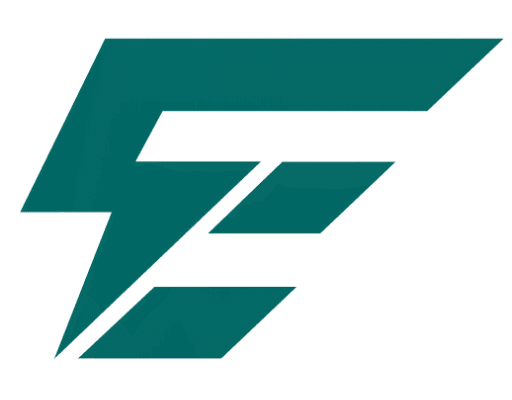Information about converters, inverters, and rectifiers is of great importance to anyone working with modern electronic and power systems. Such devices are of great importance as they are the ones that make it possible for the conversion of energy, and at the same time make different kinds of equipment and sources of energy compatible. This is very important whether you are designing a system that uses renewable energy, optimizing industrial equipment, or even just understanding how a television or other electronic gadgets work when plugged in. Besides discerning the design of the different components and when to apply which, the knowledge this article provides can truly help in each and every step. The article is going to provide insights into the basic features, working principles, and the areas where converters, inverters, and rectifiers can be used, making them the building blocks for you to take firm decisions in your projects and proceed with your explorations.
Definitions of Key Components
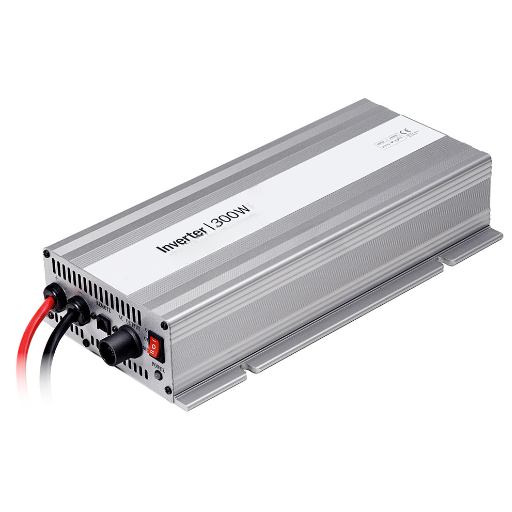
Converter
A converter is a machine or device that converts the electrical properties of power, such as changing the voltage level or changing the input current source, to meet the specific requirements of an application. It covers rectifiers that convert alternating current (AC) to direct current (DC) and inverters that perform the reverse conversion.
Inverter
Not every electronic device is conversational. MCC means media communication control; in one word, it can be abbreviated. Their function involves transforming direct current (DC) to alternating current (AC), so-called inverters, and, similarly, the opposite process: inverters turning into rectifiers.
Rectifier
In the frequency spectrum of either inverter or rectifier operation, the semiconductor devices of the power electronic system are relatively high, but the system design is entirely different. The physical appearance of inverters and rectifiers and their operation and properties are worlds apart, even though they might both use the same technology.
What is an Inverter?
In modern electrical systems, inverters are the most essential devices that convert direct current (DC) into alternating current (AC). The DC power source can be any DC power source —batteries, solar panels, or fuel cells —and inverters convert it to AC power. Inverters are very complicated devices with modern circuitry for high efficiency, reliability, and consistent output. They are most likely also equipped with features such as maximum power point tracking (MPPT) in solar systems, voltage regulation, and reduced harmonics for the powering and data processing industries to buy sensitive items. Incidentally, inverters come under three distinctive types—pure sine wave, modified sine wave, and square wave—each intended for specific applications, depending on the complexity of the needed output signal.
What is a Converter?
A converter is a machine whose primary purpose is to convert electrical energy from one form to another, typically changing voltage, current, or frequency to suit specific applications. The converters are critical to technologies such as power supply systems, renewable energy integration, and electric vehicles. They are usually divided into two main types—AC-to-DC converters (rectifiers) and DC-to-AC converters (inverters)—based on the direction of energy conversion. In addition to power factor correction (PFC), the most advanced conversion systems may include high-frequency switching for maximum efficiency, as well as thermal management systems that optimize operational performance and reduce energy loss. These equipment pieces are manufactured with the utmost precision to ensure compatibility with the broadest range of electrical infrastructures and, at the same time, comply with the strictest safety and regulatory standards.
What is a Rectifier?
A rectifier is a machine that is purposely designed to turn the electricity flowing back and forth constantly, AC, to a straight and unchanging DC. This conversion process, known as rectification, is critical because it provides DC power for electronic appliances and systems that operate on a stable, one-way current. Rectifiers are available in many forms, such as half-wave, full-wave, and bridge rectifiers, each providing the user with performance, efficiency, and complexity options. Modern diode- or thyristor-based semiconductor rectifiers are very precise and reliable, but difficult to manufacture. Commonly, rectifiers are used in power supplies for electronic devices, as basic components, as well as in DC motor drives, battery charging systems, and high-voltage direct current (HVDC) transmission networks. Recent improvements in rectifier technology have likewise been remarkable, with the integration of high-speed switching and enhancements in thermal performance being the two main contributors to improved efficiency and lifetime.
Core Functionalities
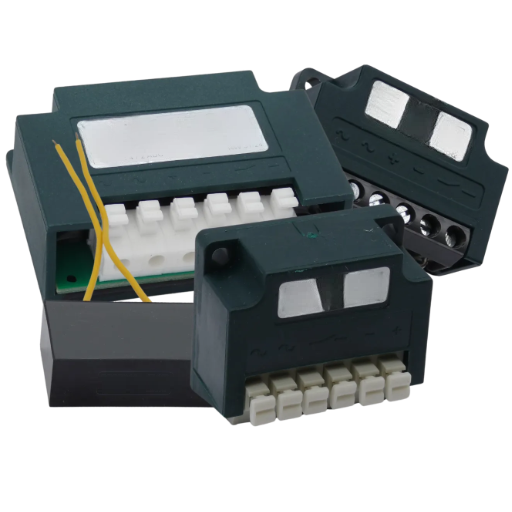
Rectifiers are commonplace tools and form the basis of the principal conversion of AC to DC, a crucial step in the operation of many electronic systems. This is simply done by allowing current to flow in one direction through the devices, which, of course, confers compatibility with DC-operated systems, such as batteries or electronic circuits. Moreover, they stipulate the output voltage and current; thus, through them, the power becomes stable and efficient, and the exact performance demanded by the application is guaranteed.
How Inverters Work: Converting DC to AC
Inverters play a vital role at every access point, converting direct current (DC) to alternating current (AC) —the most basic form of energy conversion in the modern era —further enabling the use of solar panels, electric vehicles, and backup power supplies. The very first stage of the process involves the DC voltage input, which usually comes from batteries or renewable energy sources. Through the electronic circuitry, the inverter ensures the conversion, in which transistors or other switching components periodically change current direction, producing AC electricity. The AC thus obtained is then modified to comply with a particular frequency, typically 50 Hz or 60 Hz, in accordance with regional electrical grid standards.
Advanced inverters use pulse-width modulation (PWM) technology during electrical power conversion. This allows them to generate a waveform that is very similar to a pure sine wave. Proper maintenance and sound power supply are crucial for powering sensitive electronic equipment and ensuring energy efficiency. In addition, innovative technologies such as real-time monitoring, grid interaction, and adaptive load management are being incorporated into modern inverters to enable smooth integration with interconnected energy systems. The inverter plays a critical role in encouraging sustainable energy and effective power delivery.
How Converters Operate: Adjusting DC to DC
The core of the DC-DC converter’s operation is to efficiently and controllably convert one level of direct current (DC) voltage to another, thereby meeting the requirements imposed by different electronic devices and systems. A significant element of this process is the presence of high-frequency switching circuitry that is used with inductors, capacitors, and transformers. Primary configurations such as buck, boost, and buck-boost converters are designed for a range of applications—for instance, they can be used to step down voltages for battery-powered devices or to step up voltages from solar panels.
Recent developments in power management technology have led to the integration of intelligent control systems and power electronics, with the latter leveraging the former’s high computing power for efficient, precise voltage regulation. Security provisions in these modern-day systems, such as overvoltage protection, temperature control, and fault detection, are also in place to maintain optimal system operation even under varying load conditions. Due to the ongoing innovation of semiconductor technology, which now involves the use of wide-bandgap materials such as silicon carbide (SiC) and gallium nitride (GaN), the DC-DC converters of today are now very much more efficient and high power density, thus, they are now an integral part of the electronics industry and the renewable energy sector as well.
Rectifiers Explained: Converting AC to DC
Rectifiers are essential in the power electronics industry because they convert alternating current (AC) to direct current (DC), which is critical for powering DC-dependent devices and systems. The three main types of rectifiers are half-wave, full-wave, and bridge rectifiers, each with its own circuit design and efficiency. The most recent rectifiers are designed to benefit from advanced semiconductor technologies, especially diodes and thyristors, resulting in minimal energy loss and high current conversion precision. Rectifiers are used in industrial power supplies, consumer electronics, and renewable energy technologies such as solar inverters, where they are necessary to stabilize DC output. Recent research has shown significant PFC improvements, along with decreased harmonic distortion and a rigorous system of energy efficiency standards. Moreover, the silicon carbide (SiC) and gallium nitride (GaN) rectifiers are now in the research phase, and those who see their potential as the best choice for high-power and high-frequency applications will benefit from their lower conduction losses and higher thermal conductivity.
Detailed Analysis
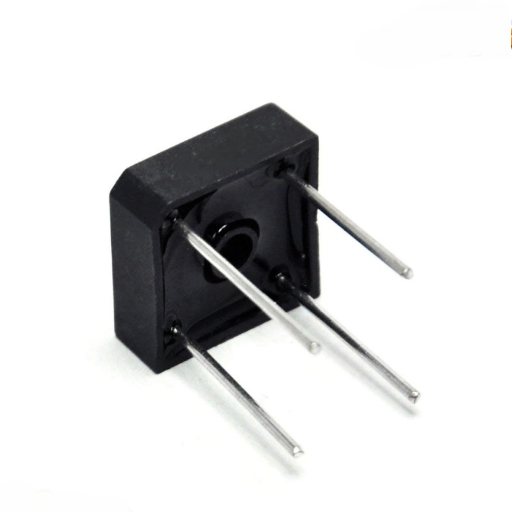
The comparison of silicon carbide (SiC) and gallium nitride (GaN) rectifiers shows outstanding performance and reliability, which is partly attributed to their advanced power electronic applications. SiC rectifiers work well in all high-voltage applications because they can withstand high breakdown voltages and are highly thermally stable. This is very useful for challenging industrial applications and for electric vehicle inverters. On the one hand, GaN rectifiers are for high-frequency applications, which incur small switching losses and thus offer design potential for tiny packages, which are rather popular in consumer electronics and fast-charging systems. The choice of whether to use SiC or GaN will be determined by the operational frequency of the power system, power levels, and cost constraints. Thus, both SiC and GaN are very useful in the power system, as they are used in two different applications according to the power flows.
Difference Between Rectifiers and Inverters
| Parameter | Rectifier | Inverter |
|---|---|---|
| Function | Converts AC to DC | Converts DC to AC |
| Direction of Conversion | AC input, DC output | DC input, AC output |
| Key Components | Diodes, thyristors | Transistors, thyristors |
| Circuit Complexity | Relatively simple | More complex |
| Efficiency | High for standard loads | High with proper design |
| Frequency Control | Not applicable | Output frequency is controllable |
| Main Application Areas | Power supplies, battery charging | Renewable energy, UPS systems |
| Voltage Output | Unidirectional, constant polarity | Alternating polarity, AC waveform |
| Power Flow Direction | Single-directional | Bidirectional potential |
| Usage in Energy Systems | Converts grid power for DC devices | Integrates renewable energy to grid |
Inverter vs Converter: Key Contrasts
| Parameter | Converter | Inverter |
|---|---|---|
| Functionality | Converts AC to DC | Converts DC to AC |
| Input Type | Alternating Current (AC) | Direct Current (DC) |
| Output Type | Direct Current (DC) | Alternating Current (AC) |
| Output Voltage Level | Stable, non-varying polarity | Variable polarity (AC waveform) |
| Efficiency Range | High efficiency in DC loads | High efficiency in AC loads |
| Frequency Control Capability | Not designed for frequency control | Offers adjustable output frequency |
| Energy Directionality | Operates in single direction | Supports bidirectional energy flow |
| Common Applications | DC-powered electronics, battery chargers | Renewable energy, grid systems |
| Heat Dissipation | Lower heat generation generally | May require external cooling |
| Use with Renewable Energy | Limited application scope | Essential for integration with grid |
Real-World Applications
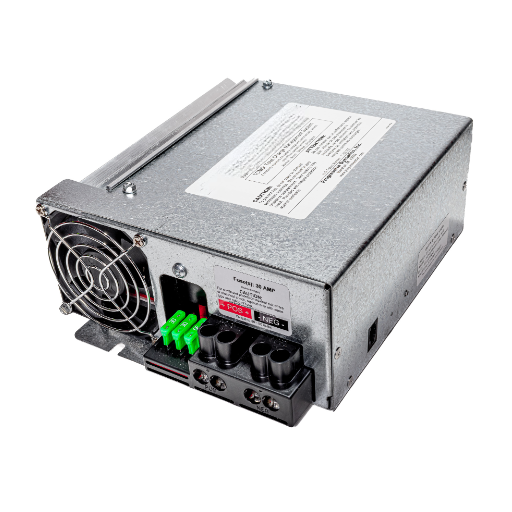
Realizing the need for converters through practical use cases demonstrates their importance in today’s systems. DC-DC converters are a common sight in devices like laptops, mobile phones, and battery-operated tools, all of which require the very same stringent voltage regulation. These converters not only make the lives of portable electronics easier by providing the necessary voltage from battery sources, but also convert very quickly and at very low power. The same is true for AC-DC converters that are widely used in green energy applications, e.g., solar panels, whose variable DC output needs to be converted into a stable AC supply for grid feeding. Moreover, they facilitate bidirectional energy flow, making them the most crucial component, since without them, the storage system will not operate at its best, resulting in energy loss.
Applications of Inverters in Electronics
Solar Power Systems
Converters are an integral part of solar power systems, as they convert the DC power from solar panels into AC power that can be used by households or fed into the grid. The current practice of using inverters in solar installations often includes additional components, such as maximum power point tracking (MPPT), which further increases solar energy conversion efficiency. The analysis confirms that the total installed capacity of solar inverters has reached over 100 GW by the end of 2022, making them a common choice in renewable energy.
Uninterruptible Power Supplies (UPS)
UPS systems use inverters to provide a reliable power supply when the primary source fails. In the event of a power cut, the inverter switches on to draw energy from the batteries (DC) to power the mains (AC) and keep the system functioning. Such a use of the technology is significant in areas such as hospitals, data centers, and telecommunications. It is worth noting that the world was deeply dependent on UPS; the global UPS market reported revenue of $13 billion in 2021, with a significant share allocated to infrastructure investments in UPS and Devices.
Electric Vehicles (EVs)
Electric cars require an inverter to convert the DC power from the vehicle’s battery into AC power for the electric motor. Even so, the good inverters can also be enabled to handle the distribution of energy while the electric car’s regenerative braking system is at work. A study that collected data from the automotive industry and published a report found that there has been a significant increase in the use of EVs. More than 10 million EVs were sold worldwide in 2022, each equipped with an inverter that is highly efficient for optimal performance.
Consumer Electronics
The inverter is a significant component in the systems we use in our households and in industry, helping replace clunky, less power-efficient devices. A good example of such home electronics is a laptop that can easily be powered from the wall via an adapter with an inverter that serves as the power supply controller. In this way, an inverter safely converts AC from the wall to the DC we use, making the adapter’s operation safer and opening an entirely new market for electricity use in industry and the economy. Moreover, it facilitates the interchangeability of the power supplies and measurement systems between countries.
Industrial Motor Drives
In industries, inverters are commonly used in motor drive systems to regulate the speed and torque of electric motors. Combining inverters with variable-frequency drives (VFDs) not only enhances energy efficiency but also improves equipment operation precision. A study by the International Energy Agency (IEA) revealed that, in industrial sectors, motor drive systems accounted for about 40% of total global electricity consumption, and inverters were used to achieve significant savings.
Telecommunications Infrastructure
The telecommunications industry is highly dependent on inverters to provide uninterrupted power to critical equipment such as base stations and servers, regardless of variations in primary power sources. Despite the wide gap between the remote and urban sites, the networks still operate continuously thanks to a system configuration that supports the robustness of modern communication networks.
Converters in Battery Management Systems
It is through the use of converters that battery management systems (BMS) can operate efficiently, controlling voltage levels and ensuring optimal performance of the connected battery. Such systems frequently employ DC-DC converters to either raise or lower the voltage to meet the specific needs of the different parts. Take, for example, the case of electric vehicle (EV) applications: converters help power transfer from high-voltage battery packs to low-voltage auxiliary systems such as lighting, infotainment, and control modules.
Advanced converters even go so far as to offer precise control of charging and discharging cycles, a feature that is crucial not only for extending battery life but also for maintaining safety standards. Bidirectional conversion allows energy transfer in both directions, enabling regenerative braking in EVs and grid integration in energy storage systems. With power electronics and semiconductor technologies continuously improving, present-day converters can achieve very high levels of efficiency, reduce energy losses, and, in general, demonstrate the reliability of the whole system. Also, they are considered excellent progress in industrial units when it comes to increasing closed-loop energy efficiency and adopting non-conventional energy sources.
Rectifiers in Solar Power Systems
Rectifiers are the core of solar power systems because they convert the fluctuating alternating current (AC) produced by solar inverters into a constant direct current (DC) for battery storage or direct load consumption. To be more specific, high-performance semiconductors, such as silicon carbide (SiC) and gallium nitride (GaN), are used to design modern rectifiers, which in turn reduce energy loss and improve thermal performance. Thus, these approaches diminish the amount of energy converted and result in higher overall solar power system efficiency. Moreover, with advanced rectifiers, the photovoltaic array performance is maintained via the Maximum Power Point Tracking (MPPT) feature, which facilitates optimal power production under varying environmental conditions. In today’s world, technology is advanced enough that the best rectifiers have an efficiency of more than 96%, meaning the power equivalent to a small percentage of the very high solar electricity quantity is wasted. Therefore, installing these rectifiers can make solar installations more sustainable and cost-effective. The reliability and flexibility of such rectifiers are, hence, among the critical foundational traits for bringing the world closer to the next level of renewable energy consumption.
Choosing the Right Device for Your Needs
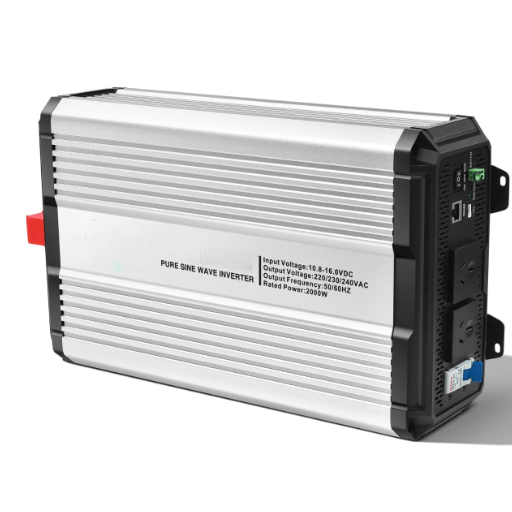
It is no mean task to closely estimate the power requirements and operating conditions for your specific situation. The rectifier should be dimensioned to meet its power demand, along with the size (capacity) of your photovoltaic system. You want to find something very efficient, preferably over 96%, to minimize energy loss and reduce running costs. Make sure that the power supply unit is compatible with your system’s voltage range and environmental factors. In addition, select units from an established manufacturer that have certain features, etc. For example, the more experience, the better. It is only an advantage if these people do not leave the company during the life of your system.
Evaluating Your Power Needs
Power requirements assessment involves, first of all, summing the power that will be consumed by the devices and systems the photovoltaic setup will supply. The usable energy (kWh) per day is the typical efficiency unit used for this. The application also requires energy consumption in the form of power demand to be met at peak times and kept stable so that the system can maintain its operating condition without any ups and downs in the power supply. Inverters and battery systems capable of controlling surges from appliances with high start-up loads, such as HVAC systems or refrigeration units, could be the best solution.
Furthermore, evaluate the energy generation capability in your area by considering solar irradiance levels, seasonality, and shading. Tools and data from the regions provide very accurate solar energy data, which helps determine the required capacity for your solar panel. When it comes to emergency power, battery storage capacity should be matched to your energy consumption patterns, thereby ensuring a sufficient reserve for the night or when the weather is poor. Checking these factors in detail leads to a design tailored to your specific energy requirements, resulting in an optimized design.
Future Trends in Power Electronics
Power electronics, as a sector, is undergoing significant change every day, mainly due to new trends in semiconductor technologies, the growing prominence of renewable energy, and the world’s focus on energy efficiency. From the various options in the power semiconductor market, devices made of wide-bandgap materials such as silicon carbide (SiC) and gallium nitride (GaN) are the clear winners because these types of semiconductors provide the highest level of efficiency, can handle higher voltage, and are less prone to heating in comparison with traditional silicon-based devices. They are especially well-suited for high-frequency applications and enable equipment to be both smaller and more reliable.
Another emerging trend is the collaboration between machine learning and artificial intelligence in power electronics systems. These technologies enable power control that adapts to the system, keep the system at peak performance, and perform maintenance only when necessary, thereby making the system more reliable and efficient. Moreover, the conception of power architectures that are both scalable and modular is being warmly welcomed, particularly in the renewable energy sector, where these technologies are widely regarded as the most significant assets.
The establishment of an electric power supply for the transportation system is another area with significant market potential for power electronics devices. There is a growing need for compact, cost-effective battery management systems for electric vehicles (EVs), paving the way for power electronics with smaller physical dimensions, higher energy efficiency, and extended driving range. The growth of vehicle-to-grid (V2G) systems, which require two-way energy flows between the grid and the EV fleet, is strongly constrained by state-of-the-art battery technology.
Final Thoughts on Power Conversion
The conversion of power is one of the principal components of modern energy systems. Its effect can be seen in efficiency, sustainability, and performance improvement rates in a number of areas. The present level of technology has been greatly changed by the introduction of new semiconductor materials, e.g., Silicon Carbide (SiC) and Gallium Nitride (GaN), which have enabled the frequency of the design’s operation to be raised, thermal loss to be reduced, and the sizes to be compact. Also, emerging technologies, including wide-bandgap devices, are taking this even further by enabling higher efficiency in high-voltage applications.
The employment of digital control systems and artificial intelligence has rather given more power to the power management solutions. Various studies reported that the power electronics market is going to see an amazing increase in the world with the influences coming from renewable energy, decentralized power systems, and the electrification of industries. All this, in turn, makes the need for continuous advancement in the power conversion area not just as a means to cope with the rise in energy demand but furthermore, to keep the planet in better shape.
Reference Sources
Design and Analysis of Single Switch Transformer-less DC-DC Converter with Universal Input Voltage for Fuel Cell-based Vehicles
Summary: This study focuses on a high-step-up DC-DC converter designed for fuel cell-based vehicles. The system includes an inverter and a rectifier to manage AC-DC conversion, ensuring compatibility with the inverter’s DC link.
High Frequency Soft Switching PWM DC/DC Converter with Secondary Side Active Rectifier
Summary: This paper introduces a high-frequency soft-switching PWM DC/DC converter with a secondary-side active rectifier. It discusses the advantages of using full-bridge controlled rectifier and inverter transistor switches to improve efficiency and reduce power losses.
Frequently Asked Questions (FAQs)
What is the difference between inverters and converters?
The main difference between inverters and converters lies in their distinct tasks. Inverters, that is, are essentially intended for converting DC to AC power. This power is the kind needed for the solar panels in the house, for example, for industrial machines. In contrast, the converter mode can be likened to a guy who has on his shoulders, among other things, AC-to-DC power conversion and voltage regulation in a DC system. Therefore, all inverters are converters, but not all converters are inverters; understanding the differences between the two is essential before choosing the correct device for your electronics.
How does a rectifier convert AC to DC?
A rectifier is a device that converts AC power to DC power, which is necessary to power electronic devices that operate on DC. The device allows current to flow in only one direction, eliminating the negative part of the wave. This results in a pulsating direct current (DC) output. The rectifiers currently available are of different types, including half-wave and full-wave rectifiers. These devices differ in output quality and conversion efficiency. The above effect is also used to stabilize battery systems and electronic circuits with fixed-voltage power supplies. Understanding how rectifiers work is the paramount condition for effective power management in various electronic systems.
What is an inverter and how does it work?
An inverter is an electronic device that converts direct current to alternating current, which is most widely used. The transformation process is essential when using AC power, such as powering household gadgets or connecting to the primary grid. The way these devices work is that they change the connection, remove the DC, and put the AC through, thus changing the voltage; through the same process, they change the frequency, and hence we get an AC output that has a constant value. There is a variety of inverter types, ranging from pure sine wave to modified sine wave inverters, among others, and each type meets different needs in renewable energy systems and backup power solutions. Once you understand how inverters work, choosing the most suitable one for your energy needs will be easy.
What are the types of converters used in electronics?
The electronics sector has many types of converters, each with a specific job. For instance, AC-DC converters are a common type used in different applications to provide devices with reliable DC power, whereas DC-AC converters are a must-have for systems that are initially DC-powered and require AC conversion. Furthermore, power converters can alter the waveform during conversion. This makes power converters flexible for the same power system having various voltages. Knowing the right converter for your needs is very important; for example, in solar power systems, efficiency and reliability are top priorities.
